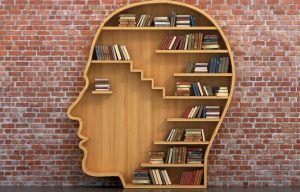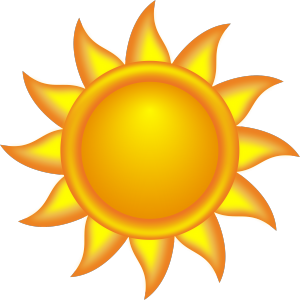Here is a review of the many things we did during term three!
To tie the big ideas from our curriculum together into a larger, enduring understanding,
we studied subject areas through the lens of a universal, conceptual theme.
For term three we focused on the concept of CONNECTION
in our unit THE NATURE CONNECTION.
Unit focus statement:
Human beings impact and rely upon the balance of nature’s interdependent systems.
Unpacking the concept of CONNECTION — What does it mean?
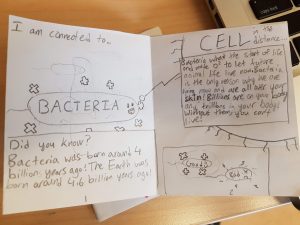 What does connection mean, and where do we see it? We began with class discussions around what we connect to personally, how we are connected to the community, and how we are connected to the world. Each student made a zine, which is a small, paper, easy-to-reproduce info magazine, to describe all of the things they feel they are are connected to.
What does connection mean, and where do we see it? We began with class discussions around what we connect to personally, how we are connected to the community, and how we are connected to the world. Each student made a zine, which is a small, paper, easy-to-reproduce info magazine, to describe all of the things they feel they are are connected to.
How are we connected to our natural environment? First we talked about what we can find in our natural environment and had fun deciding what is abiotic and biotic. IS a virus alive or not?? What about prions? At the end of the day, some of this is still up for debate!
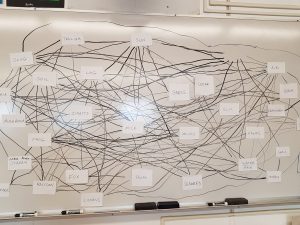 We watched Planet Earth: Pole to Pole, and discussed the variety of biomes, ecosystems, and amazing organisms that exist across the planet. Each student was given a card with an organism within our local ecosystems, and after doing quick research, placed it on the board to connect it within the food web and cycles of our world. Further reading was done on how parts of nature are connected through food chains, as well as the carbon, nitrogen, phosphorus, and water cycles.
We watched Planet Earth: Pole to Pole, and discussed the variety of biomes, ecosystems, and amazing organisms that exist across the planet. Each student was given a card with an organism within our local ecosystems, and after doing quick research, placed it on the board to connect it within the food web and cycles of our world. Further reading was done on how parts of nature are connected through food chains, as well as the carbon, nitrogen, phosphorus, and water cycles.
Making connections to tell the story of life!
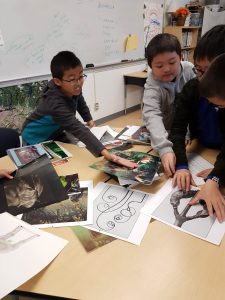 To better understand how organisms in our ecosystems are connected, we investigated taxonomy. Scientists use taxonomy to classify life according to specific features, adaptations, reproductive and survival behaviours, and appearance.
To better understand how organisms in our ecosystems are connected, we investigated taxonomy. Scientists use taxonomy to classify life according to specific features, adaptations, reproductive and survival behaviours, and appearance.
Before we looked at the official chart, we did our own hands-on sorting, and small groups were given piles of pictures of animals and organisms to organize into specific groups according to characteristics. We had lots of great debate! Then we had an opportunity to learn about the classification system, picking an animal and learning about their kingdom, phylum, family, class, genus, and official Latin species name.
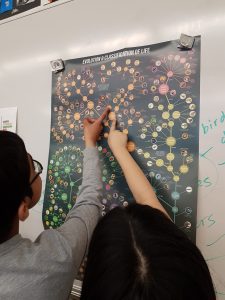
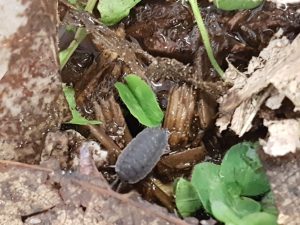 During one of our many walks, we found roly polys. New discoveries were made as we learned pill bugs are not actually BUGS, but are instead ancient crustaceans that need water to breathe because they have gills! And they reproduce through parthenogenesis! We made a roly poly bug farm in the classroom and did some on-the-spot research to answer our questions and learn more!
During one of our many walks, we found roly polys. New discoveries were made as we learned pill bugs are not actually BUGS, but are instead ancient crustaceans that need water to breathe because they have gills! And they reproduce through parthenogenesis! We made a roly poly bug farm in the classroom and did some on-the-spot research to answer our questions and learn more!
This led to amazing discussions about how we have evolved as organisms over time. We looked at how we are connected to the past, and how paleontologists and archaeologists use careful observation, documentation, and critical thinking to construct our history from fossil evidence and dig sites. Our visit to the UBC Biodiversity and Pacific Earth Science Centre Museums allowed us to learn more about biodiversity, adaptations, genetic diversity, and how scientists connect clues together to understand the story of life.
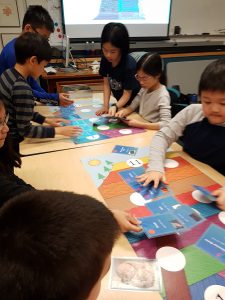

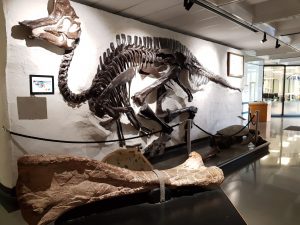
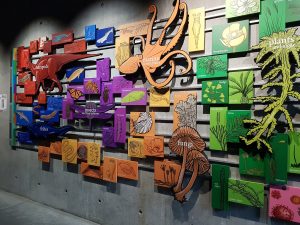
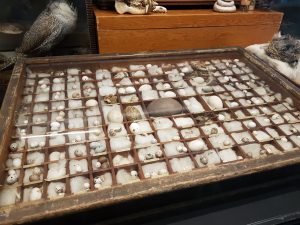
How do we become more connected to and observant of the nature around us?
As we looked at how we are connected to other organisms, we developed a better understanding of place and the nature directly around us. Through the Burnaby-New West Walking Challenge, we took regular walks outside, during which we used the Walking Curriculum, a series of activities designed to help us become more observant, mindful, and thoughtful about what we are seeing and experiencing while we walk. We discussed how this mindfulness and being outside was helping improve both our physical and mental health! These exercises also helped us practice being super-observers to help with science investigations in the future.
We used loupes to look carefully at natural specimens and plants found around our playground. We talked about how to observe shape and line quality first when trying to carefully draw specimens, and we did several still-life, up-close drawings to record outside findings. We learned names for local plants and trees, identified invasive plants that were not part of the ecosystem, and discussed local animals and habitats.
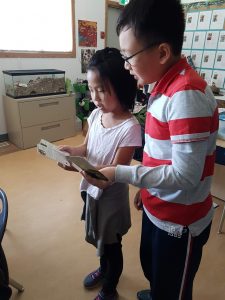
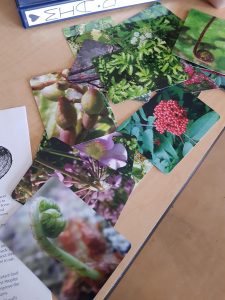
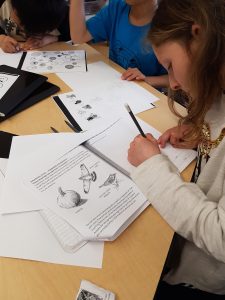
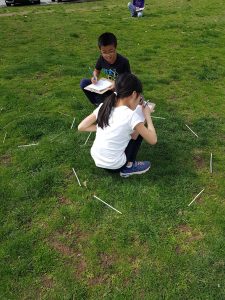
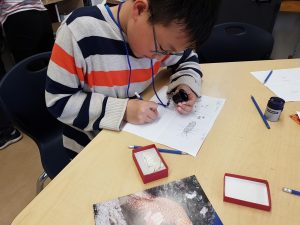
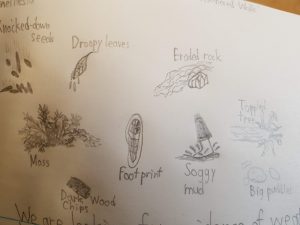
We also read The Girl Who Drew Butterflies about Maria Merian who changed science with her careful drawings. Then we made our own careful butterfly drawings, with attention to symmetry, and with the addition of pastel and watercolour technique.
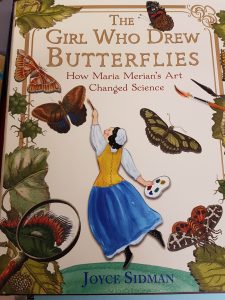
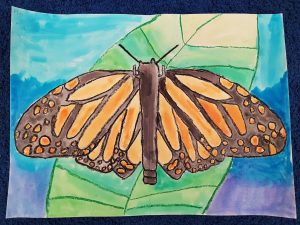

Finally, we talked about extinct, endangered, and protected animals in B.C. Afterwards, each student chose a unique animal they didn’t know anything about and researched its biome, ecosystem, habitat, taxonomy, adaptations, behaviours, and connection to First Peoples stories and art. Students asked questions, documented research, and recorded resources in a bibliography. Finally, they presented their findings in a written e-port entry, as well as a beautiful piece of art inspired by the works of Oregon artist Sue Coccia and zentangle patterns.
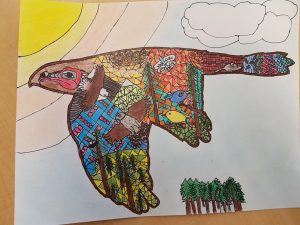
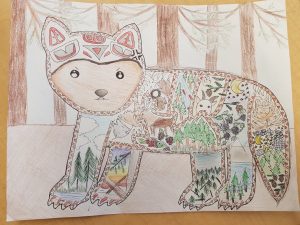
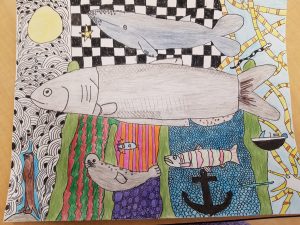
First Peoples’ Connection to Nature and Traditional Knowledge:
 As we developed observation skills that help with scientific investigations, we also asked, “What is science?” We discussed the difference between lab science, school-based science, and traditional knowledge of First Peoples. We read My Elders Tell Me, a great story about how a group of First Nations children learned skills for daily survival and respect for the environment directly from their elders. We watched videos about the Great Bear Rainforest and learned how those lands are being actively protected by First Peoples and others collaboratively through the combined use of indigenous, traditional knowledge and new technology. We read how First Peoples are working in partnership with scientists to manage local waterways, and how indigenous knowledge provides careful observations from years and years of living on the land. We learned about clam gardens and how First Peoples managed marine food systems, so we can better protect food sources today. Overall, we had great discussions about our connection to the land and the value of traditional knowledge!
As we developed observation skills that help with scientific investigations, we also asked, “What is science?” We discussed the difference between lab science, school-based science, and traditional knowledge of First Peoples. We read My Elders Tell Me, a great story about how a group of First Nations children learned skills for daily survival and respect for the environment directly from their elders. We watched videos about the Great Bear Rainforest and learned how those lands are being actively protected by First Peoples and others collaboratively through the combined use of indigenous, traditional knowledge and new technology. We read how First Peoples are working in partnership with scientists to manage local waterways, and how indigenous knowledge provides careful observations from years and years of living on the land. We learned about clam gardens and how First Peoples managed marine food systems, so we can better protect food sources today. Overall, we had great discussions about our connection to the land and the value of traditional knowledge!
How are our actions connected to the health of the environment?
Talking about the core competency of SOCIAL RESPONSIBILITY.
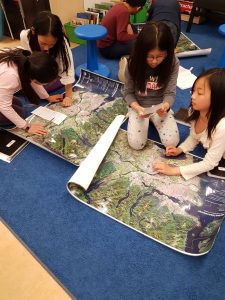
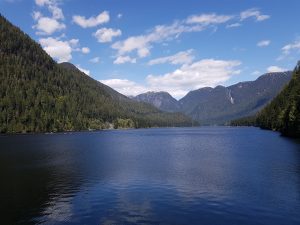
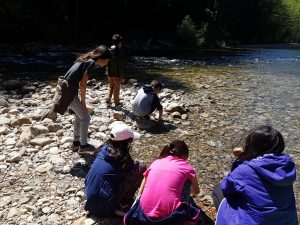
Part of being better connected to nature is better understanding our role in keeping the environment we depend upon healthy!
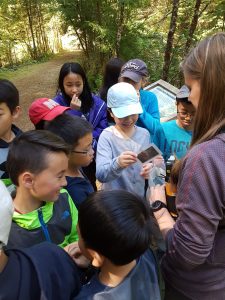 How much fresh water is available in the world? After a hands-on lab, we realized it’s not very much! We did a series of activities provided by the GVRD about the water cycle so we could understand how we get fresh water, which human activities impact fresh water availability, and what we can do to reduce our water footprint. We went to the Lower Seymour Conservation Reserve to hike and see crystal clear water, amazing old-growth trees, and new animals and plants we hadn’t experienced before. We saw our clean watershed and learned how it is protected.
How much fresh water is available in the world? After a hands-on lab, we realized it’s not very much! We did a series of activities provided by the GVRD about the water cycle so we could understand how we get fresh water, which human activities impact fresh water availability, and what we can do to reduce our water footprint. We went to the Lower Seymour Conservation Reserve to hike and see crystal clear water, amazing old-growth trees, and new animals and plants we hadn’t experienced before. We saw our clean watershed and learned how it is protected.
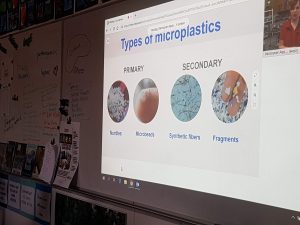 We had a visit from the Vancouver Aquarium’s Virtual Aqua Class Program, to learn about ocean plastic pollution, micro plastics and their impact on us, and how we can reduce plastic use. The OWL Organization from Delta came to share how pollution, rodenticides, and housing development are impacting local ecosystems and birds of prey. We visited with an owl and a hawk up close and discussed how we can help!
We had a visit from the Vancouver Aquarium’s Virtual Aqua Class Program, to learn about ocean plastic pollution, micro plastics and their impact on us, and how we can reduce plastic use. The OWL Organization from Delta came to share how pollution, rodenticides, and housing development are impacting local ecosystems and birds of prey. We visited with an owl and a hawk up close and discussed how we can help!
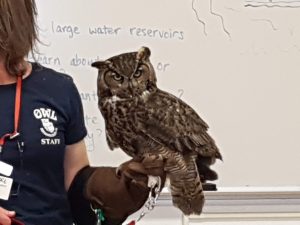
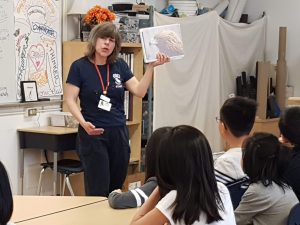
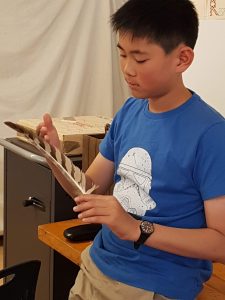
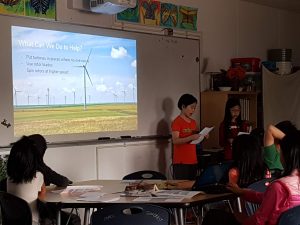 Finally, we talked about global warming and climate change, listening to the inspirational Bill Nye explain the science and the possible problems that will occur. We read articles about desertification, pollution, and other human-made disasters in the environment. As a final project, students chose one area to research further and presented a slideshow explaining the problem, how our actions are connected to the problem, and things we can do to help.
Finally, we talked about global warming and climate change, listening to the inspirational Bill Nye explain the science and the possible problems that will occur. We read articles about desertification, pollution, and other human-made disasters in the environment. As a final project, students chose one area to research further and presented a slideshow explaining the problem, how our actions are connected to the problem, and things we can do to help.
Finding connections as we read!
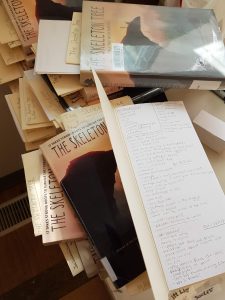 Ms. D read The Skeleton Tree, while everyone followed along and took notes in “readminders” designed to collect thoughts about new vocabulary, key details, connections, or questions while reading. This involved metacognition — becoming aware of how we think so we can improve our critical thinking! The book tells the story of two boys stranded on the Alaska coast and how they survive.
Ms. D read The Skeleton Tree, while everyone followed along and took notes in “readminders” designed to collect thoughts about new vocabulary, key details, connections, or questions while reading. This involved metacognition — becoming aware of how we think so we can improve our critical thinking! The book tells the story of two boys stranded on the Alaska coast and how they survive.
We also read parts of The Practical Survival Guide for Kids as we discussed what we would do if we were lost in the wilderness. We created comprehension questions of greater depth using Question and Response (QAR), and students explained this in their e-port entries about the book. It was an exciting tale that connected well to our unit!
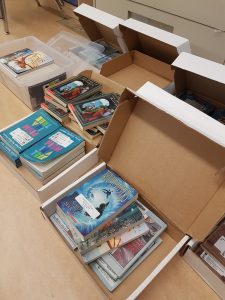 We also explored the connection between literary devices, voice, and expression of meaning in poetry. We continued ongoing writing work from Rip the Page to further develop our descriptive vocabulary. One day we created a class poem all about nature and posted it on Twitter! Students learned about alliteration, personification, metaphor, similes, and other literary devices, as well as poetic forms such as ballads, dual-voice poetry, limericks, haikus, and tankas. Each student chose one poem to explore further through recitation, using the tools of public speaking such as emphasis, enunciation, tone, volume, pace, gestures, and pauses to communicate meaning.
We also explored the connection between literary devices, voice, and expression of meaning in poetry. We continued ongoing writing work from Rip the Page to further develop our descriptive vocabulary. One day we created a class poem all about nature and posted it on Twitter! Students learned about alliteration, personification, metaphor, similes, and other literary devices, as well as poetic forms such as ballads, dual-voice poetry, limericks, haikus, and tankas. Each student chose one poem to explore further through recitation, using the tools of public speaking such as emphasis, enunciation, tone, volume, pace, gestures, and pauses to communicate meaning.
Our final activity for the year is a fun in-class Battle of the Books! We have made teams and are currently reading and making questions for the battle on June 21st!
Connection Between Nature and Math!
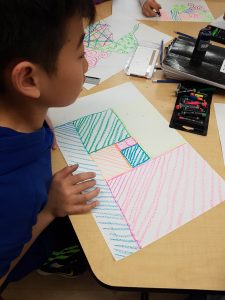 Our main focus was geometry and math related to patterns in nature. We read the book Flow, Spin, Grow and actively looked for the shapes and patterns from the book during our walking curriculum activities. As part of our discussion, we also identified 2D and 3D shapes and discussed how they are classified and why.
Our main focus was geometry and math related to patterns in nature. We read the book Flow, Spin, Grow and actively looked for the shapes and patterns from the book during our walking curriculum activities. As part of our discussion, we also identified 2D and 3D shapes and discussed how they are classified and why.
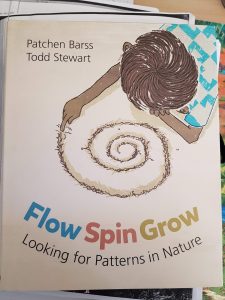 Students also completed activities about measurement, area, perimeter, shape classification, volume, angles, multiplication, division, fractions, and decimals through applied math problems about nature in the books Animal Math and Planet Earth Math.
Students also completed activities about measurement, area, perimeter, shape classification, volume, angles, multiplication, division, fractions, and decimals through applied math problems about nature in the books Animal Math and Planet Earth Math.
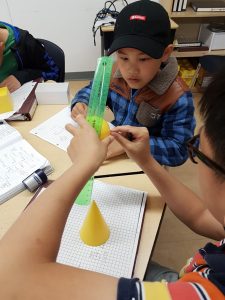 Some students took on extra challenges in geometry classifying triangles, using basic algebra expressions to find angle measurements, or doing area challenges in the book Area Mazes 2.
Some students took on extra challenges in geometry classifying triangles, using basic algebra expressions to find angle measurements, or doing area challenges in the book Area Mazes 2.
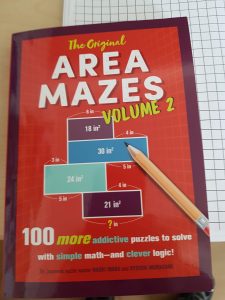 Others enjoyed artistic parts of math, using compasses and protractors to create complicated patterns from This is Not a Math Book.
Others enjoyed artistic parts of math, using compasses and protractors to create complicated patterns from This is Not a Math Book.
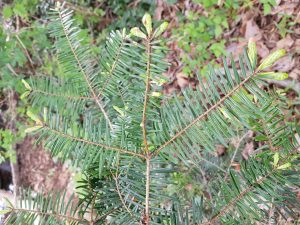 We also discussed Fibonacci patterns, watching a video series on angles found in nature and making our own, portable “angle-a-trons” for 137.5 degrees to try outside on plants, confirming that leaves grow in specific and consistent angle patterns to maximize light exposure.
We also discussed Fibonacci patterns, watching a video series on angles found in nature and making our own, portable “angle-a-trons” for 137.5 degrees to try outside on plants, confirming that leaves grow in specific and consistent angle patterns to maximize light exposure.
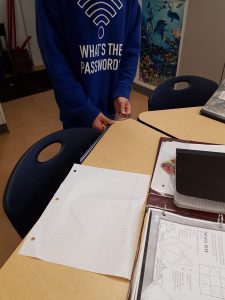 We enjoyed using a protractor to measure angles in our classroom, finding out that construction of tables and wall corners isn’t always a perfect 90 degree angle as we might have imagined!
We enjoyed using a protractor to measure angles in our classroom, finding out that construction of tables and wall corners isn’t always a perfect 90 degree angle as we might have imagined!
Finally, we used our discussion of geometry and measurement to create scale models of objects so we would understand how to make a scale model for applied design. Many students also participated in optional math competitions for Abel and Gauss. Congratulations!
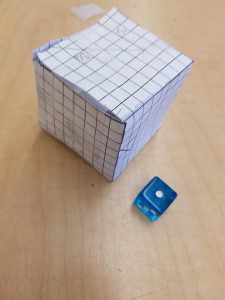
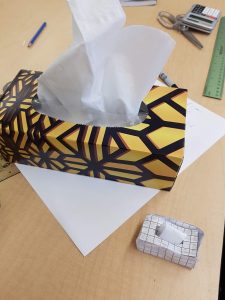
Getting Outdoors, Getting Healthy!
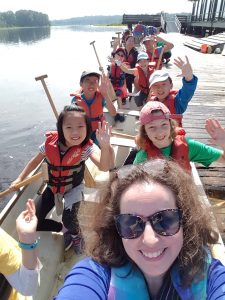 We talked a lot about how being outside was good for our physical and mental health, and so we spent a good deal of time learning outdoors and having fun!
We talked a lot about how being outside was good for our physical and mental health, and so we spent a good deal of time learning outdoors and having fun!
We went dragon boating three times at Burnaby Lake, displaying collaborative and communication skills as we rowed in two teams up to 4000 meters in a session. Whew!
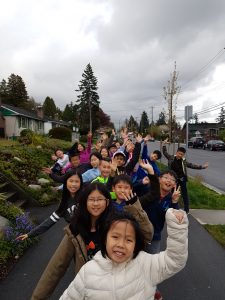 We did the Burnaby-New West Walking Challenge, recording minutes walked at school and at home.
We did the Burnaby-New West Walking Challenge, recording minutes walked at school and at home.
Congratulations to Division 5 for having the most minutes of any class in the Burnaby School District!
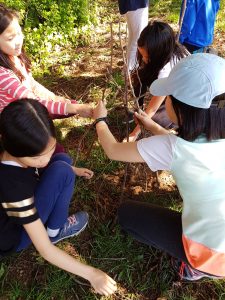
We went to the Watershed, doing a hike outdoors, which was amazing! And we did the Walking Curriculum, taking our learning about observation and mindfulness outside.
We integrated conversations about the outdoors into our French learning, as well, by focusing on communicating the weather. To prepare for the Watershed, we talked a lot about weather conditions and how they change frequently at the mountain. We are currently practicing a song in the style of Shawn Mendes that communicates the weather!
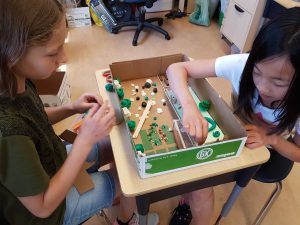 For Applied Design , we decided to imagine what the empty grass space outside of our classroom could be like. Using math and our outside observations during the unit, we made scale models of a proposed nature space for relaxing, learning, and taking a break outdoors. Students were asked to incorporate mathematics and unique natural elements into the design. Thank you everyone for your creative results!
For Applied Design , we decided to imagine what the empty grass space outside of our classroom could be like. Using math and our outside observations during the unit, we made scale models of a proposed nature space for relaxing, learning, and taking a break outdoors. Students were asked to incorporate mathematics and unique natural elements into the design. Thank you everyone for your creative results!
Independent Project and Career Education!
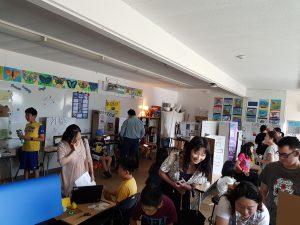 By February, most students had selected topics for independent study. They were allowed to select any topic as long as it was something they sincerely cared about!
By February, most students had selected topics for independent study. They were allowed to select any topic as long as it was something they sincerely cared about!
During each project this year, we developed curricular competencies to help with a successful independent inquiry.
These skills can be found in almost every aspect of the curriculum, including career education, social studies, language arts, science, fine arts, and applied design. Here is a quick summary:
- Understanding passions and making a commitment to pursue a personal interest
- Project management, goal setting, and meeting deadlines
- Self-management as they monitor their time during open work periods
- Asking questions that further an inquiry, including open and closed questions
- Documenting and organizing research through notes and a bibliography
- Searching online effectively, including finding reliable and safe resources
- Using critical thinking to analyze resources and summarize findings
- Communicating findings in writing and through public speaking
- Applying creative thinking by sharing results through a variety of media
For more information on the original task, please see the post on Independent Project.
Music for Term 3, from Ms. Fletcher
In music class, students continue to explore elements of beat, rhythm, tempo, pitch and form. They have been playing music individually and collaboratively on African drums, as well as learning how to read music notation and play the recorder.
Final Reflections and E-Portfolios
Thank you to all of the students for your excellent work this term! Please see each of their personal e-portfolios for self-reflections about core competencies and learning this year.

